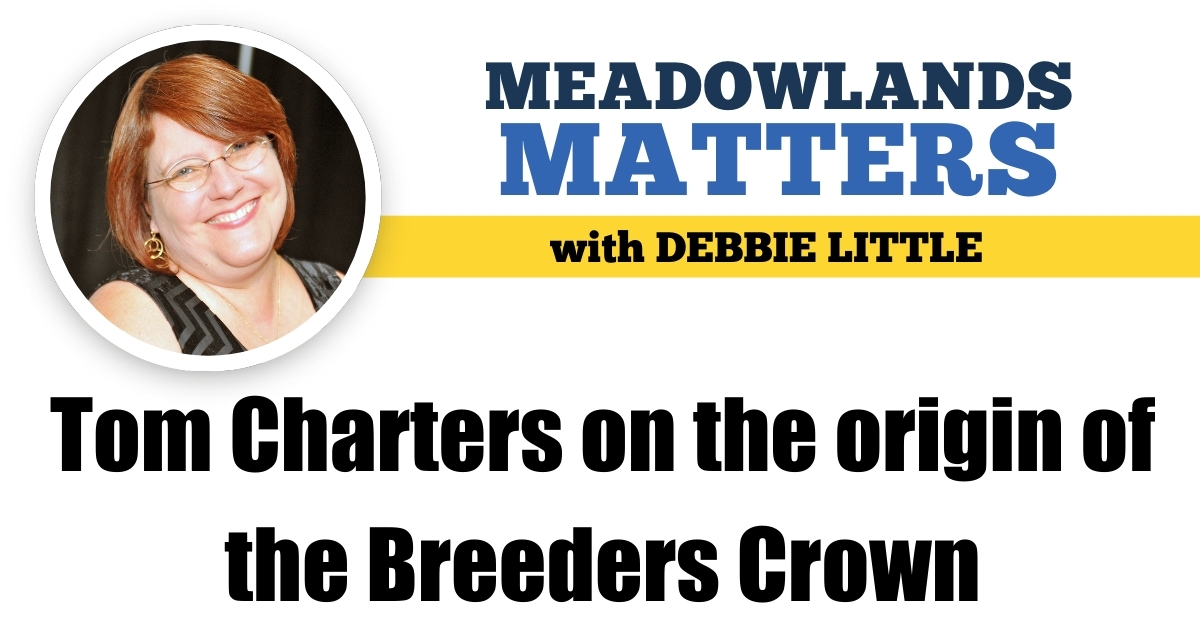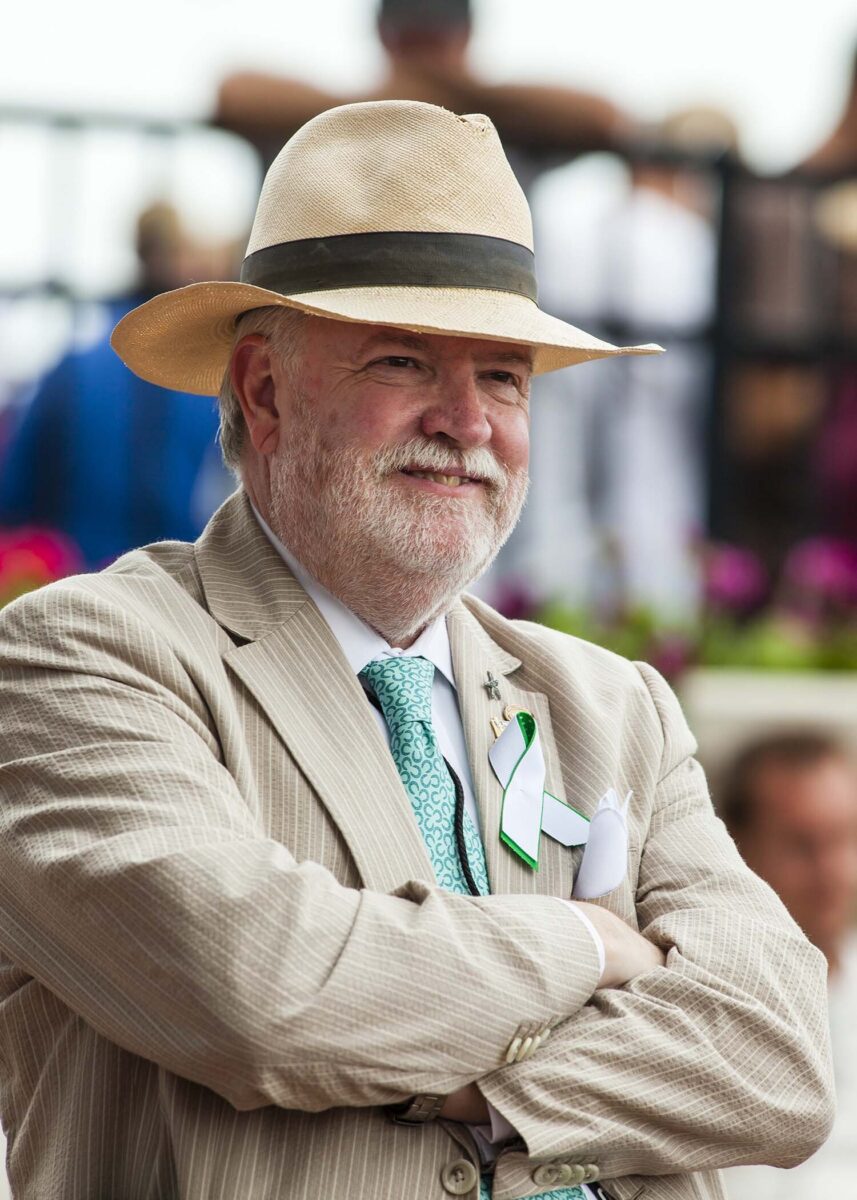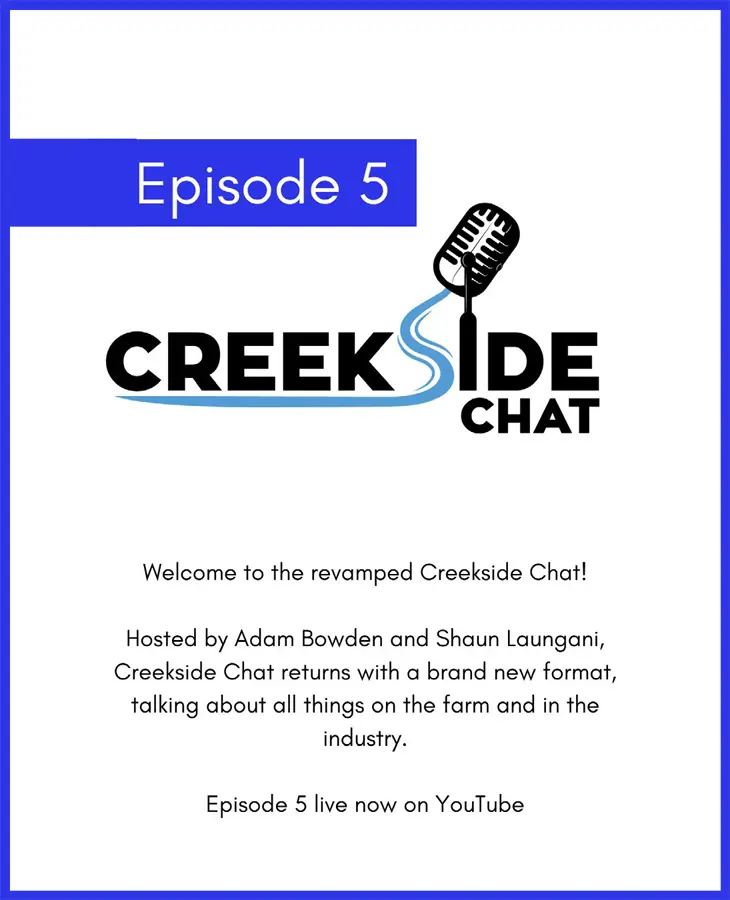
Tom Charters on the origin of the Breeders Crown
Four decades ago, the birth of the championship series was a story of foresight and perseverance.
by Debbie Little
As The Meadowlands prepares to play host to the finals for the 41st edition of the Breeders Crown, Hambletonian Society executive vice president Tom Charters spoke with HRU about how the year-end championship series got its start.
According to Charters, the idea for the Crown was hatched on the Lexington, KY, social scene.
“The original idea was called the Breeders Championships,” Charters said. “We’ve got the document at the [Hambletonian Society] office.
John Cashman worked with Curt Greene and Hambletonian Society secretary George Alexander to draft the aforementioned document.
“Fred Van Lennep [owner of Castleton Farm] was very involved socially with the thoroughbred scene and John Gaines, of course, had a background in harness racing before he got so deeply involved in thoroughbreds,” Charters said. “His father was Clarence Gaines who is enshrined in the Hall of Fame in Goshen, owned Gainesway Farm [which was] originally a standardbred farm, and was a good owner for among others, Frank Ervin and John Simpson, Jr.
“And John Gaines came up with this idea [for the Breeders’ Cup for thoroughbreds] that started circulating among the cocktail circuit around the Lexington area. And Mr. Van Lennep went to John Cashman [general manager of Castleton Farm] and said, ‘We ought to try to do something like that.’”
Van Lennep sent a letter to then Hambletonian Society president Max Hempt saying that harness racing needed a championship program and that the Hambletonian Society should own and operate it.
To say there were a lot of moving pieces in play, especially in those early days, would be an understatement according to Charters.
But, as they say, timing is everything and that definitely was the case for both Charters and the launch of the Breeders Crown.
As the idea for the Crown was being nurtured, Charters was halfway around the world, finishing up a gig working in Macau. Upon his arrival back in the States, Charters was contacted by his former boss.
“I got a phone call from Delvin [Miller] and he said, ‘Did you get my Christmas card?’” Charters said.
In that card that Charters had not yet received, Miller had told him, “Don’t do anything about a job until you talk to me.”
Miller explained that the Hambletonian Society had a new project and that they were looking for someone to head it up and that he thought Charters should apply for the job.
So, Charters went down to Pompano for what he thought was a job interview.
“Cashman came in and started telling me all the things I had to do,” Charters said. “I said, ‘Don’t I have to interview?’ He said, ‘No, you’ve got the job.’ So, that’s how I got the job.”
In 1984, Charters was named the executive director of the Breeders Crown. Ten years later, Charters rose to the position of executive director of the Hambletonian Society, and then four years after that, was elected the Society’s president and chief executive officer; a position he held until he passed the torch to John Campbell in 2017.
Although it may run like a Swiss watch now, there were definitely a few bumps along the road before the first Crown race crossed the finish line.
Some ground work had already been laid prior to Charters arrival on the Crown scene.
“By that time, they had hired a group called Robert Landau [Associates] who was the agency for the Breeders’ Cup also,” Charters said. “Landau was a big agency. They had two floors in the Chrysler building [in Manhattan].”
Landau’s high-profile clients included Major League Baseball, the National Basketball Association, Burger King, Miller Brewing and Ford.
Despite the fact that everything looked to be going well in the months leading up to the first Breeders Crown race at The Red Mile, Charters had a nagging thought in the back of his mind.
“I know that in the midst of great joy, tragedy lurks around the corner,” he said. “I forget who that’s a quote by, but it’s a good definition that I always think about for what could go wrong.”
It turned out that Charters’ thoughts were pretty on point.
“About two weeks — and maybe even less time than that — before the first Breeders Crown in Lexington, Robert Landau went bankrupt,” Charters said. “We had signed the contract, but we didn’t have any money to pay for TV. All the money went to Landau, and Landau went down a black hole.
“So, the Society had an emergency meeting and about 10 directors of the Society stepped up and pledged their own money to keep the Breeders Crown afloat. And one was Castleton Farm, Mr. Van Lennep, who pledged about half of it and everybody else pledged $10,000 or so across the board.
“I would say they are one of the few boards that would have done that and they also needed more than that, so Mr. Van Lennep went on behalf of the Breeders Crown to get money from the USTA. I forget exactly how much, but they gave us a sizable amount, too, to keep it afloat.
“So, there were a lot of groups that pitched in, which in retrospect, it was a pretty good investment for 40 years. The logo hasn’t changed. The concept hasn’t changed. The format has changed a little. But it’s here because of the support of the directors of the Hambletonian Society and the hard work that they devoted to it. A lot of times I was just a passenger. I mean, it had momentum of its own, just like a horse. And enough people believed in it, including the stallion owners.”
Something else that hasn’t changed in four decades is the Breeders Crown logo, which was a collaborative effort between sports marketing executive Mike Letis and artist Barbara Rosenwach. Letis, along with his partner, Mike Trager, represented the Crown. The pair had left Landau to form their own company before Landau went belly up. Rosenwach was able to translate Letis’ vision, creating the horse, based on a USTA photo of Niatross, along with the crown and a unique typeface. Rosenwach also created the logo for another client of Letis and Trager, the Breeders’ Cup.
Charters clearly remembers Letis and Rosenwach designing the logo.
“The one point in the discussion where we probably made a poor decision was when we decided to leave out the apostrophe after the ‘s’ in Breeders Crown because it looked better purely for design purposes,” Charters said. “What was good design, was poor punctuation.”
In regard to the supportive breeders in those early days, Charters had a story that involved three major farms, Van Lennep’s Castleton, John Simpson of Hanover Shoe and Alan Leavitt’s Lana Lobell.
“John Simpson, Fred Van Lennep or John Cashman, and Alan Leavitt rarely spoke, let alone got in the same room and planned something,” Charters said. “Andy Grant used to tell me that he considered one of the high points of his contribution to racing was that he got all three of them in a room to work together. That’s what made [the early Breeders Crown] work; they supported it and they got other breeders to support it.”














